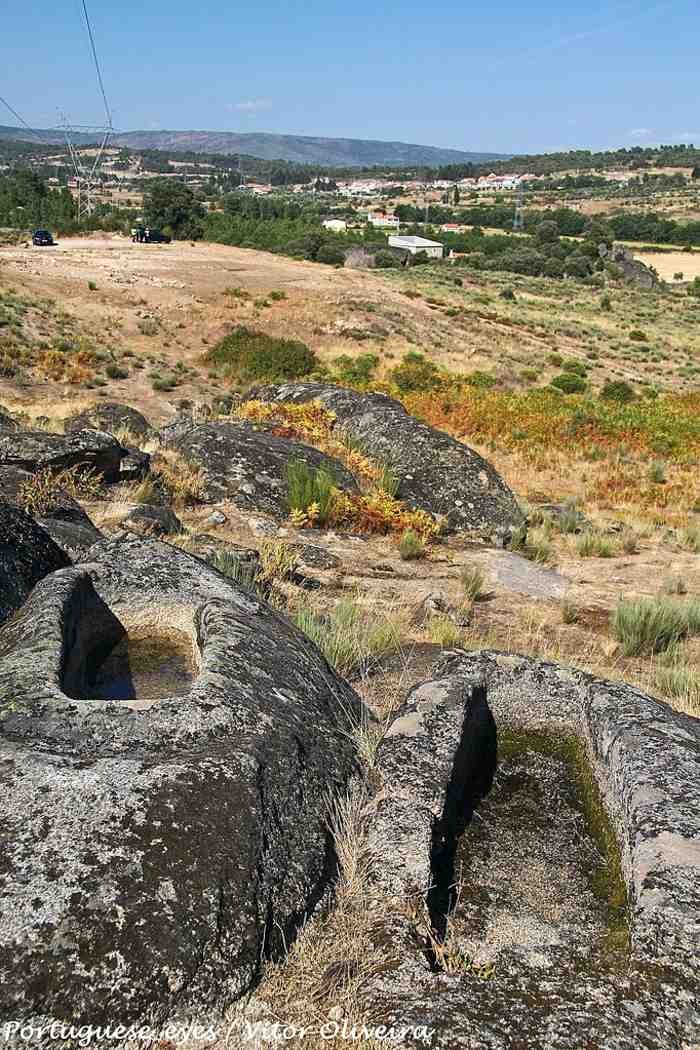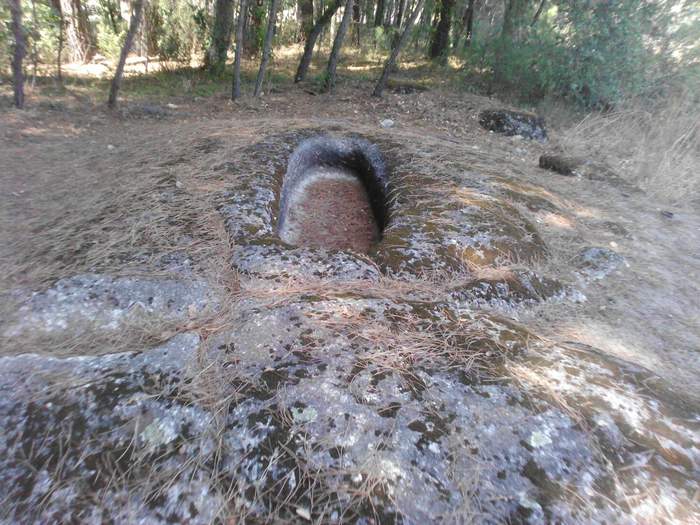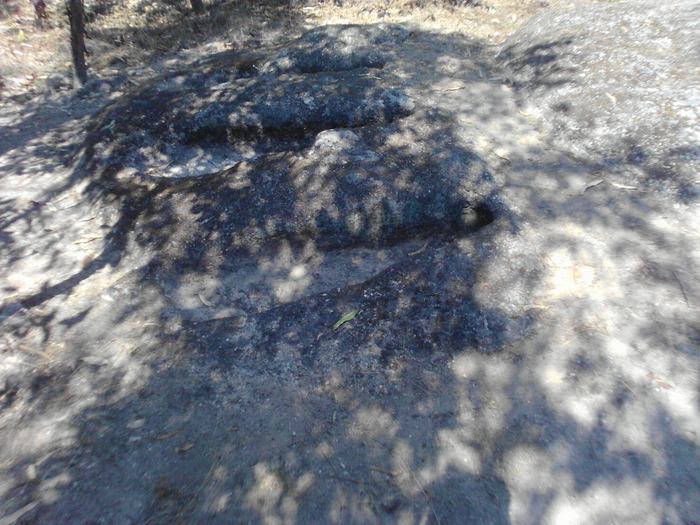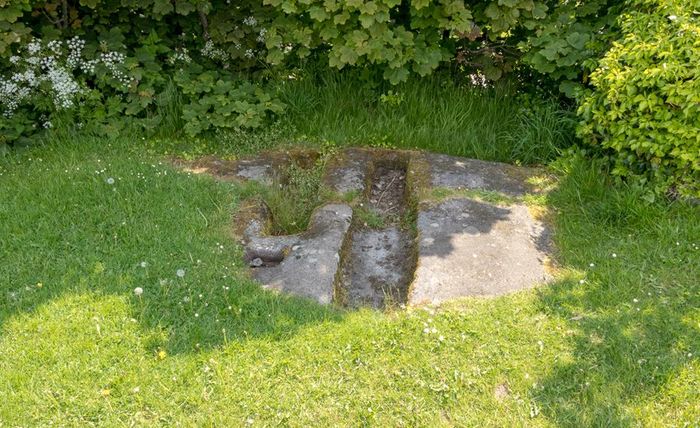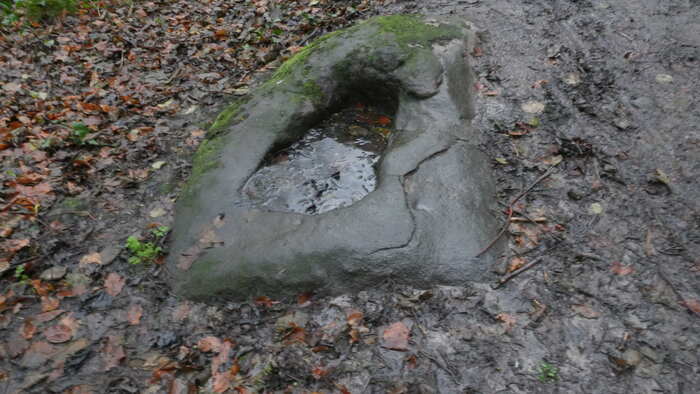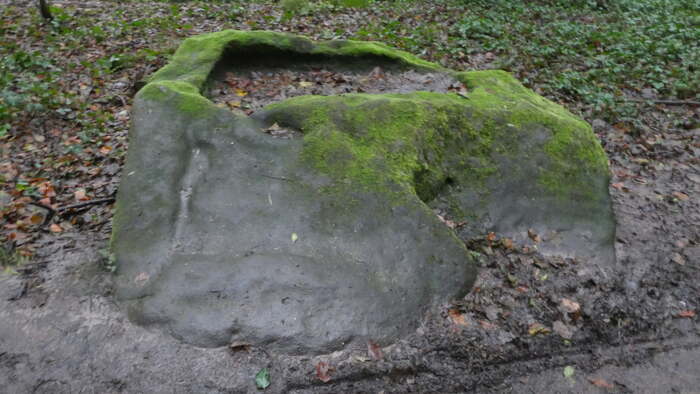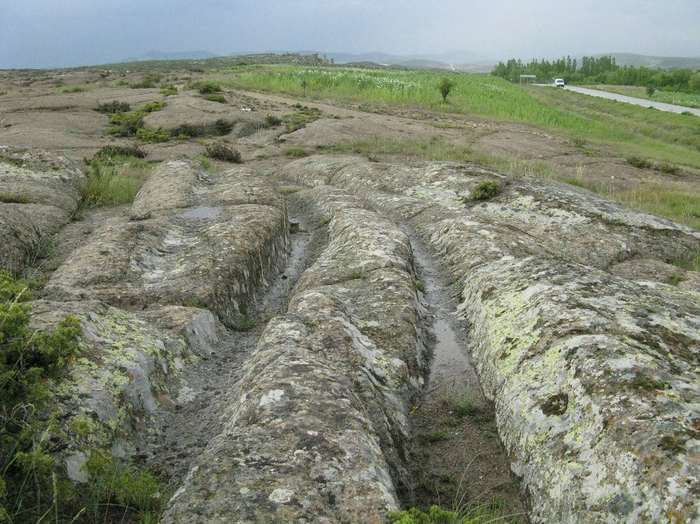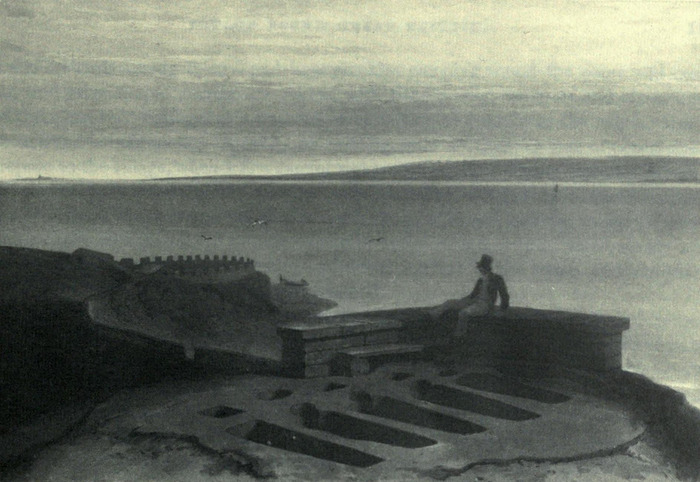The Stations of the Cross stood on the domes of the rocks. Wed 15 June 2022
Elevated 'tombs' at Necrópole de São Gens, Celorico da Beira, Portugal. Source
Conventional analyses of rock-tomb structures treats the stone as 'natural' rock.
But let's take a closer look.
The grave trough is usually a little higher than ground level.
That's because the tombs were cut into dome-shaped rocks. Like the two, steep rock domes shown above. And the shallow rock dome shown below:
Sepultra da Cova da Moira, Carregal do Sal, Portugal.
A few hundred metres away from the Sepultra da Cova da Moira rock tomb are three more rock tombs. Called the 'Sepulturas da Cova da Moira', they are splayed out next to each other on the lower of two rock domes:
Sepulturas da Cova da Moira, Carregal do Sal, Portugal
Three rock tombs can be seen carved into a shallow rock dome on the left. It's top surface is about half a metre (18 inches) above ground level.
The edge of a second, upper dome is visible in the top right corner. The top of the upper dome is about 60cm (2ft) above the lower dome.
Everywhere we see rock tombs, we see them in curved rock domes.
For example, the two small rock tombs at St Patrick's chapel, Heysham, England:
Infant tomb, adult tomb and cross socket. Source: Phil Platt/Google Maps
Just in case you're behind the curve, here it is again - its dome profile outlined in red:
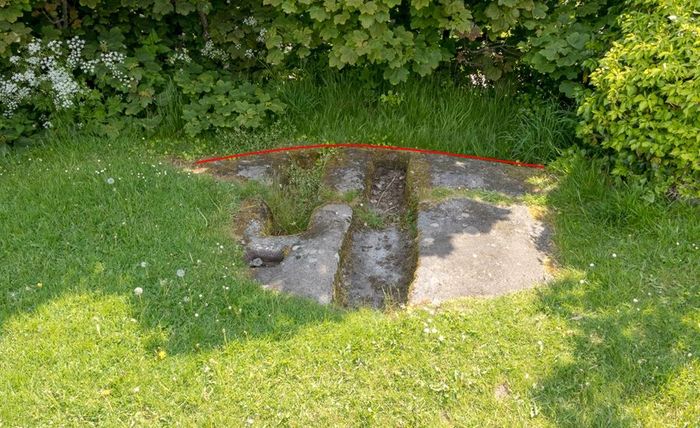
About 100m (330 ft) south of Heysham's rock tombs is Rectory Woods. It is home to two rock features known as the Druid Stones:
Small Druid Stone, Rectory Woods, Heysham. Source: Finding Fairies at Heysham Head
Large Druid Stone, Rectory Woods, Heysham. Source: Finding Fairies at Heysham Head
The large Druid Stone looks very similar to certain rock tombs among the hundreds in Portugal's Serra de São Mamede rock tomb cluster.
Once you know what you're looking for, the variation in the steepness of the various rock domes is easy to see across Europe's rock tomb estate:
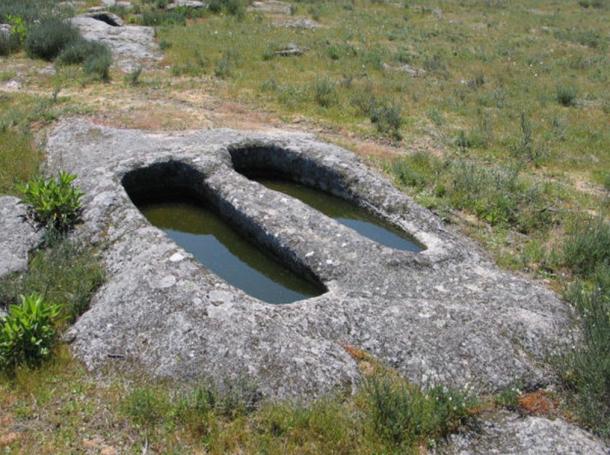
Necrópole das Forcadas, Fornos de Algodre, Portugal.
If rock tombs were moulded into dollops of artificial stone, the base of the artificial stone should have moulded itself to the shape of the ground at the time it was poured. You don't usually see the bases of rock tombs' underlying rock domes. Because you don't usually see them tipped over.
But there is one:
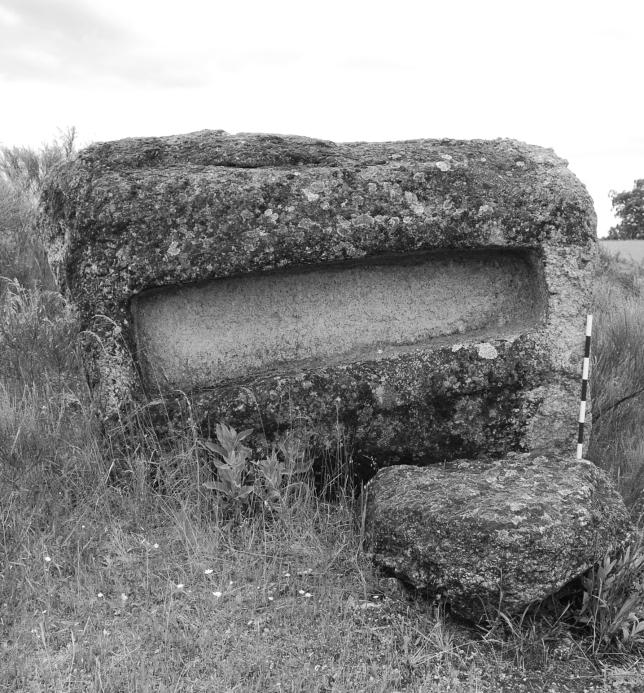
Tipped rock tomb. Tapada do Tristão, Alentejo, Portugal. Source: The High-Medieval Necropolises of the Serra de São Mamede (Counties of Castelo de Vide and Marvão), p168
Sadly there's no usable photograph of its base. But sketches of sections through this rock tomb's profile show its more or less flat base:
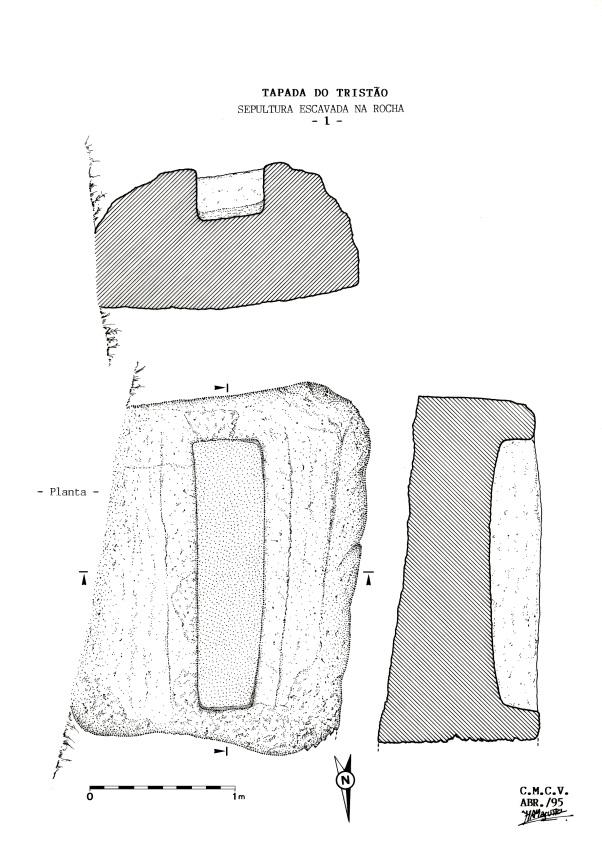
Tipped tomb base sketches. Tapada do Tristão, Alentejo, Portugal. Source: The High-Medieval Necropolises of the Serra de São Mamede (Counties of Castelo de Vide and Marvão), p168
The sketches suggest it was poured on to the gentle slope on which it sits
As most photos show, rock tombs were not IP65 compliant. They weren't built in this way to keep rainwater out.
Although some rock tombs once had recesses - and some seem to have had cover-slabs - many don't. And whether they had cover-slabs or not, no cover-slab could have kept water out of these 'tombs' for very long.
So they weren't built like this to keep fluids out. They were built to keep fluids in.
Which is not great for bodies.
So why?
Apparently, it seems, for materials processing:

Women's hair was often longer than their legs. Source: Camille Sourget catalogue, 2020
We see a raised stone bath with a column to one side.
This image came from a Camille Sourget art auction catalogue. The catalogue said this image is from a 16th century 'Book of Hours'. It says the book was painted on highest quality, white vellum.
Note the image is framed by tassels of long hair.
Several interpretations of this image are possible:
- The book is a souvenir of a 'pilgrimage' to an exotic, AI-populated pleasure garden. A medieval Westworld.
- Alternatively, perhaps earlier attempts to explain away 'rock tombs' tried to depict them as medieval baths. Or even baptism baths. These explanations are no more ludicrous than the modern explanations of rock tombs as 'graves for children' and 'graves for elite relics'.
- More likely: hair and skin harvesting were normal aspects of the culling of humans. And this image shows preparation for the bio-harvest.
The effort invested in building the rural infrastructure of rock tombs is only enigmatic to us because our modern minds fail to appreciate the amount of waste product created by mass slaughter:
Pilgrims preyed for sustenance and souvenirs. Source: Significant Other
When culling at scale, a well thought out mise-en-place reduces the challenges of waste management and contamination.
All staff working with meat products in hotels, restaurants, butchers and abattoirs know this.
More fodder for this theory can be gleaned by analysing the neighbourhood around rock tombs.
Rock tombs, like Europe's cart-ruts, tend to be found near quarries. Heysham St Patrick's for example. While the rock tombs near Carregal do Sal in Portugal are sited along the upper sides of the clearly quarried Mondego river valley.
In looks and locations, rock tombs resemble Europe's enigmatic 'cart-ruts':
'Cart-ruts' criss-cross Malta's islands. Source: Malta’s Cart Ruts
An unanswered question about cart-ruts asks whether they were worn into hard rock or carved into soft rock.
Rock tombs are presented to us as graves carved into hard rock. However, the soft curved appearance of their rock domes suggests they were carved - or cast - into large dollops of artificial rock mix.
Artificial rock mix like Coade Stone:
You can't crack the Coade. Source: Ewaranon - 3 - LHFE 2 - 05 - Annex 1
The first known depiction of the rock tombs at St Patrick's Chapel, Heysham also suggests they were carved - or cast - into large dollops of artificial rock mix:
Heysham rock tombs in 1813. Source: A voyage round Great Britain, Vol II, p115
The sharply defined outer edge of the pour is quite visible in Daniell Williams' 1813 engraving. The sharp edges of each Heysham rock tomb also add a 'freshly poured concrete' look to the image.
Williams' image poses problems for the orthodox Heysham narrative. It also suggests rock tombs across Europe have dug archaeologists into a hole.
Locations discussed in this evidence collection
© All rights reserved. The original author retains ownership and rights.
More of this investigation:
Away in a Manger,
More of this investigation:
Misunderstood Technology
More by tag:
#human meat, #human fat, #manimal farm, #geology
